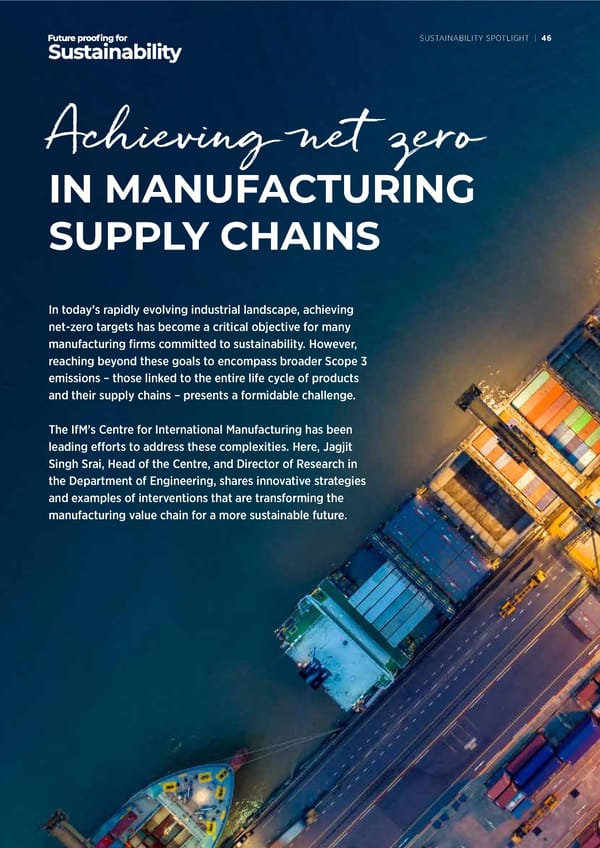SUSTAINABILITY SPOTLIGHT | 46 SUSTAINABILITY SPOTLIGHT | 47 Can we redesign products, production and sustainability during its use. The e ort is even greater Achievin et zer supply chains for sustainability? for companies transitioning to new operating and Manufacturing companies are increasingly setting business models adopting circular economy principles. ambitious goals to achieve net-zero targets, marking At the Centre for International Manufacturing, significant advances in their sustainability initiatives. we work closely with industrial and institutional IN MANUFACTURING This enthusiasm for sustainability is buoyed by a partners to address these challenges by considering surge in consumer demand for products produced alternative (renewable) materials, exploring smaller- using sustainable and ethical practices. Furthermore, scale manufacturing operations closer to the market, SUPPLY CHAINS regulatory bodies are enacting stricter guidelines, and evaluating the opportunities these interventions compelling companies to embrace sustainable provide for redesigning supply chains. Our expertise solutions. This change may also be fuelled (but not in the analysis, design and operation of manufacturing always!) by the advocacy of shareholders, leadership supply chains is applied across sectors from food and teams and employees to produce more sustainable healthcare to automotive and aerospace. In today’s rapidly evolving industrial landscape, achieving goods and prioritise sustainability. net-zero targets has become a critical objective for many Exploring the di erent options throughout the manufacturing firms committed to sustainability. However, However, it can be challenging for companies to include manufacturing value chain is important when it comes broader Scope 3 goals and consider the impact of to creating more sustainable operations. Figure 1 reaching beyond these goals to encompass broader Scope 3 their products’ usage in their supply chain operations. emissions – those linked to the entire life cycle of products Achieving this requires a thorough assessment of (below) provides examples of interventions that can various product designs, production methods and shape future supply chain configurations, such as and their supply chains – presents a formidable challenge. exploring alternative renewable feedstocks, evaluating supply chain set-ups. Key areas to focus on include new production processes or developing supply chain The IfM’s Centre for International Manufacturing has been alternative materials and energy sources, production scenarios that promote circular business models. processes, delivery methods and the product’s leading e orts to address these complexities. Here, Jagjit Singh Srai, Head of the Centre, and Director of Research in the Department of Engineering, shares innovative strategies and examples of interventions that are transforming the Figure 1. Example intervention strategies in delivering sustainable supply networks manufacturing value chain for a more sustainable future.
 Sustainability Spotlight Magazine Page 45 Page 47
Sustainability Spotlight Magazine Page 45 Page 47